For me, a lemon tart has to be all about the zing and tang of the lemons – that little shock you get when you take the first bite. I like to use Lisbon or Eureka lemons because they have high acidity levels. If you want a softer lemon flavour, try using Meyer lemons, which are a hybrid with lower acidity – you may need to adjust the sugar content accordingly.
This recipe uses only the juice in the filling, but you can wash the lemons well, finely grate the rind and then rub it into the sugar for extra lemony flavour. The filling is a custard of eggs, lemon juice, sugar and crème fraîche. I use whole eggs to give the finished tart a glassy or transparent look, and crème fraîche rather than cream because I like the flavour – it has the same fat percentage as pouring cream so you can substitute pouring or thickened cream if you prefer.
Lemon tart recipe
Ingredients
Method
For pastry, process flour, butter, icing sugar and lemon rind in a food processor until coarse crumbs form.
Add egg and ½ tbsp water and pulse until pastry dough forms a ball.
Form pastry into a disc of about 14cm diameter, wrap in plastic wrap and chill for 30 minutes.
Preheat oven to 175C. Roll pastry out on a lightly floured bench to a round 4mm thick and 35cm wide.
Lightly prick pastry with a fork.
Trim the pastry to a 35cm round and place in a 24cm-diameter, 3cm-deep fluted tart tin with a removable base, leaving pastry hanging over edges. Press pastry scraps into a ball and use this to press pastry case into the edges of the tin. Refrigerate for 30 minutes.
Line pastry case with foil, fill with chickpeas or ceramic pie weights and blind-bake until pastry is cooked through (35 minutes). Remove chickpeas and foil, reduce oven to 150C and bake until pastry is golden brown and crisp (10-15 minutes).
Patch any holes or cracks using small thin pieces of pastry. Lightly whisk eggwhite and brush sparingly over inside of tart case. Return to oven for 2 minutes, then set aside to cool.
Leave oven at 150C. Whisk eggs and yolk lightly to break up. Add sugar and stir with a whisk until sugar starts to dissolve and mixture is glossy and syrup-like (4-5 minutes). Set aside, stirring occasionally, until sugar is completely dissolved (about 35 minutes). Whisk crème fraîche in a large bowl with a little of the egg mixture to just loosen. Add lemon juice to egg mixture, then add crème fraîche a little at a time. Set aside while pastry cools.
When pastry is cooled, skim foam off the top of lemon mixture, then strain into a jug. Half-fill the tart case with lemon mixture, then place tart on an oven shelf, ensuring it’s level. Fill to the rim with remaining filling (you may have a little left over). Bake until the tart is set but with a little wobble in the centre (about 30 minutes).
Remove from oven, cool for 5 minutes, then trim overhanging crust.
Cool tart in tin for 2 hours, then carefully remove from tin. Serve dusted with icing sugar.
It’s really important to seal the pastry well to prevent any seepage during cooking, and to trim the pastry soon after cooking. Let the tart cool in the tin before removing it, or it will crack.
Pastry chef Catherine Adams
Tip 1: To make the custard, mix sugar and eggs, then let the mixture stand
To make the custard, you need to mix the sugar and eggs, then let the mixture stand until the sugar dissolves completely – the mixture will be cloudy at first, then become glassy as the sugar dissolves. I use superfine caster sugar because it dissolves easily, and stir the mixture rather than whisk it to avoid creating air bubbles. Let it stand for around half an hour, stirring occasionally, to ensure the sugar dissolves properly, then stir in the lemon juice and crème fraîche.
I add a little of the runny egg mixture to the crème fraîche first to thin it and to make sure there are no lumps. Transfer the mixture to a jug for easy pouring and when you’re ready to fill the tart, skim the air bubbles from the surface.
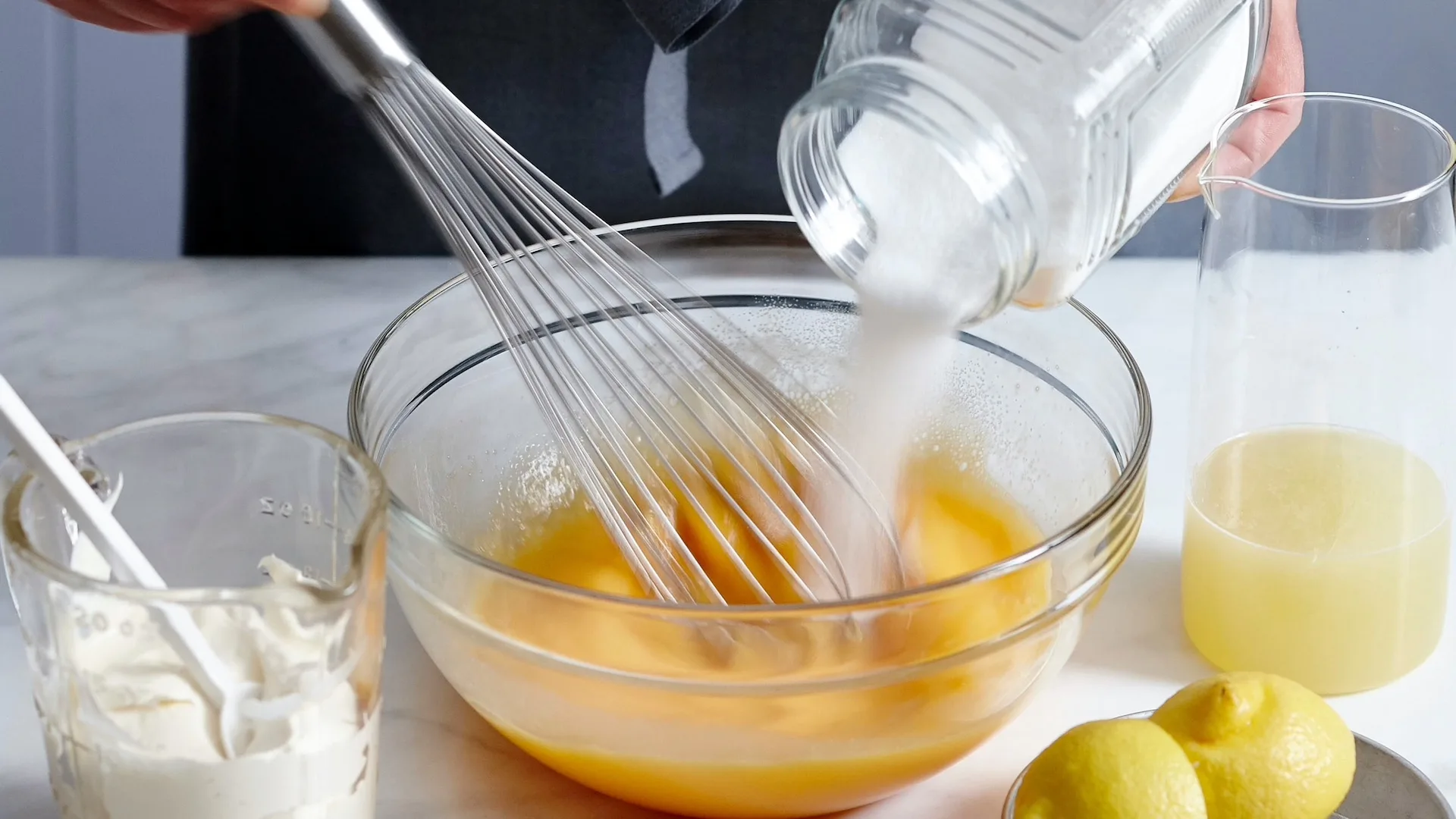
To make the custard, mix sugar and eggs, then let the mixture stand.
(Photo: Rob Shaw)Tip 2: For the pastry, use a little less butter than usual
For this tart, I use a sweet pastry with less butter than usual to make the pastry easier to handle. A rich shortcrust pastry would get fatty around the edges, and I prefer a pastry that doesn’t compete with the creamy filling – a pastry that’s crisp and snappy. I add a little water to the dough to make it a bit elastic so it’s easier to work with and you get a nice crisp finish.
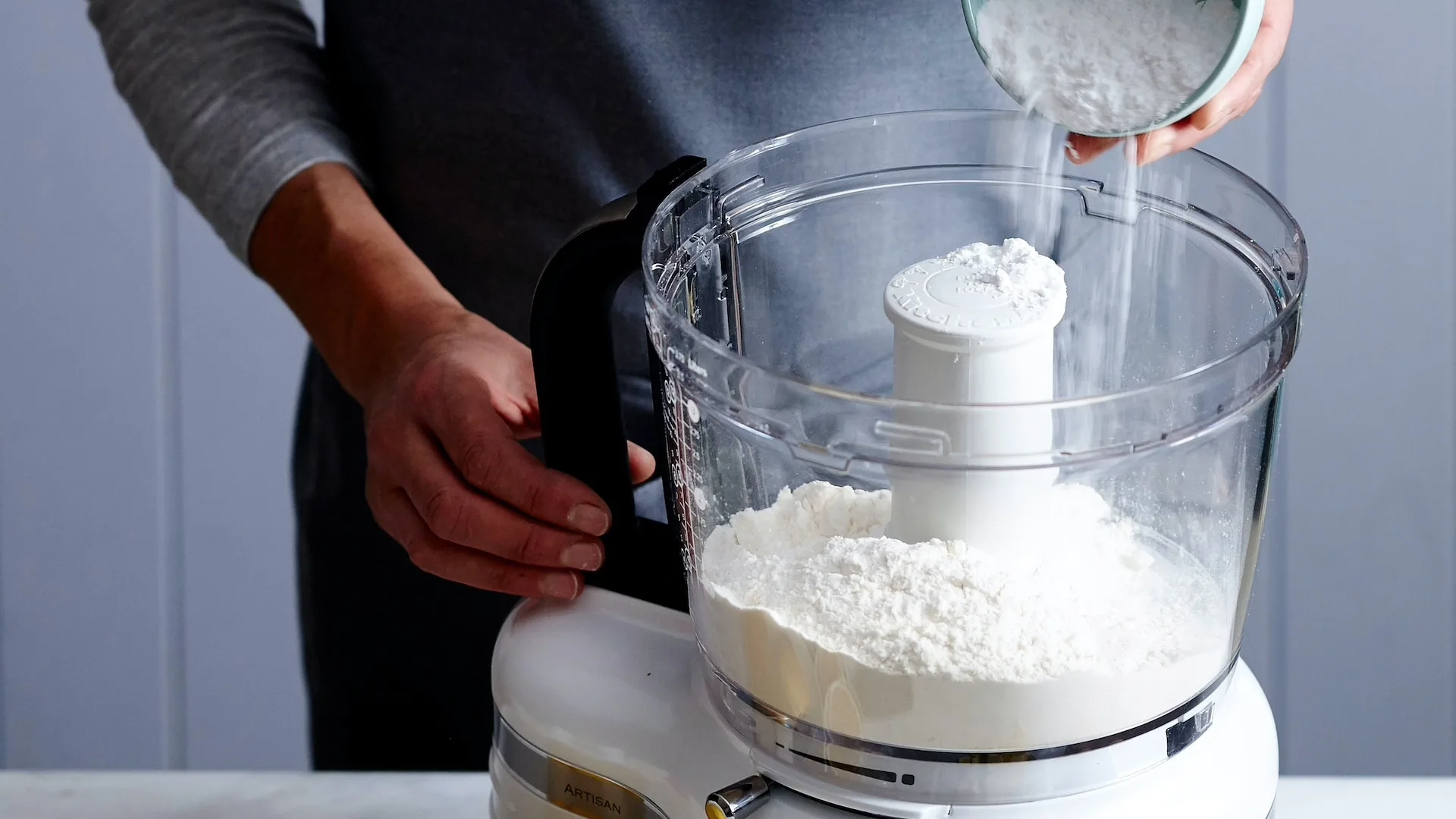
For the pastry, use a little less butter than usual.
(Photo: Rob Shaw)Tip 3: Rest the pastry before rolling
Rest the pastry in the refrigerator after mixing it to give the flour time to hydrate and to relax the gluten; it also firms the butter, making the pastry easier to roll. Take it out of the fridge and let it sit at room temperature for 10 minutes before you start rolling so it’s easier to manage – pastry can crumble and crack if it’s too cold. Roll it out to a large round and trim some excess but leave it still larger than your tart tin so there’s plenty to hang over the edges. The pastry needs to be docked or pricked to stop it puffing up during baking, but don’t be too vigorous – you don’t want to create large holes.
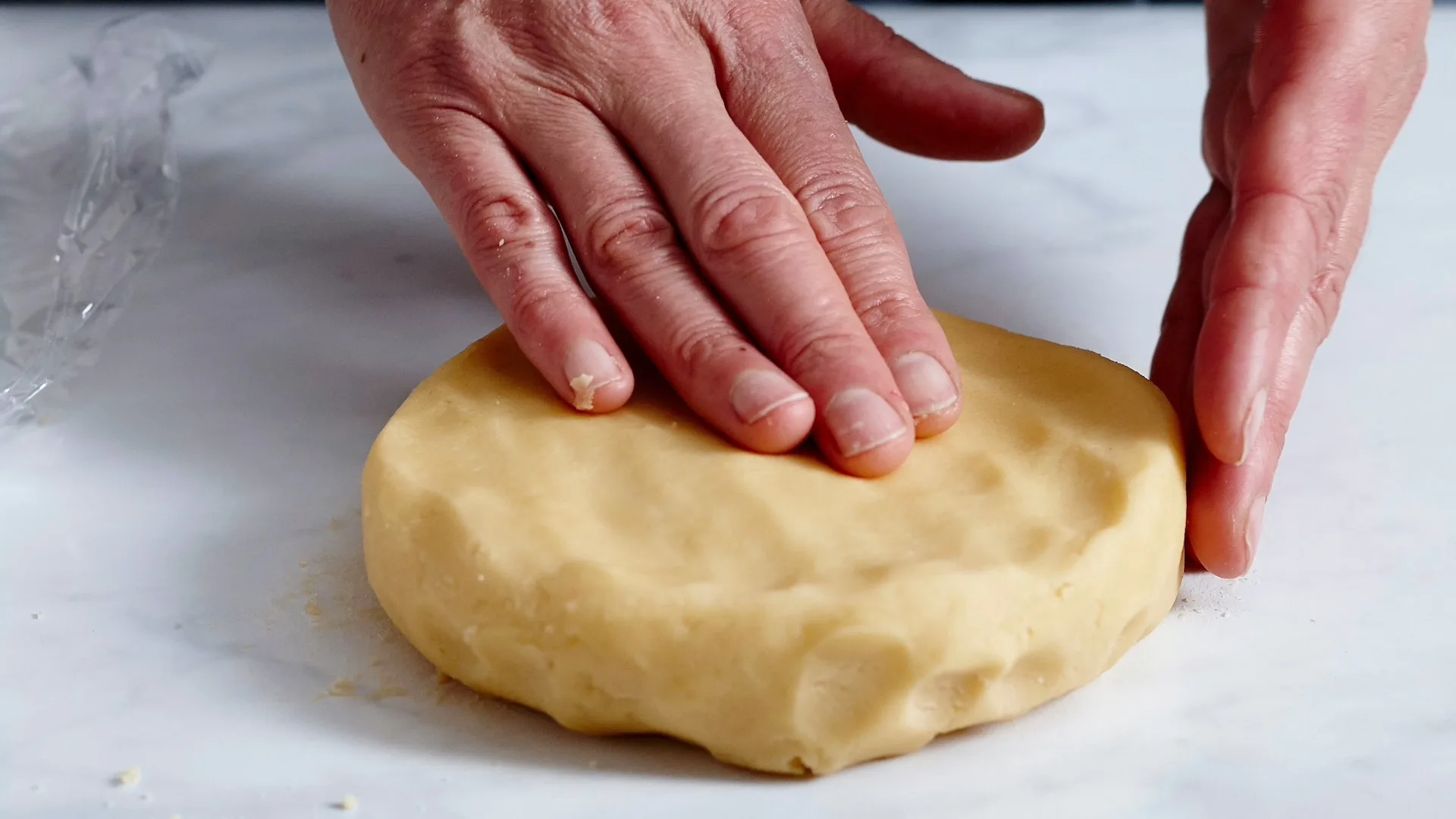
Make sure you rest the pastry before rolling.
(Photo: Rob Shaw)Tip 4: Use pastry trimmings to “push” the pastry to the edges of the tin
Line the tin with the pastry, then roll the trimmings into a ball and use it to push the pastry case neatly into the edges of the tin (fingers don’t conform with the edges as well). I leave the pastry overhanging to make it easier to fill the tart to the top, and I trim the edges off after the tart’s baked. This also prevents the filling from spilling between the pastry and the tin, which would make the tart stick.

Use pastry trimmings to “push” the pastry to the edges of the tin.
(Photo: Rob Shaw)Tip 5: Dried chickpeas make the best baking weights
For blind-baking, I use a double layer of foil, because it’s durable and you can get it to fit neatly into the sides of the case.
Dried chickpeas are the best baking weights – they’re less messy than rice. The key to blind-baking is to cook the pastry thoroughly, until it’s evenly golden brown because once you add the filling the pastry won’t cook any further. I bake my pastry at a relatively low temperature to ensure it browns evenly from top to bottom.
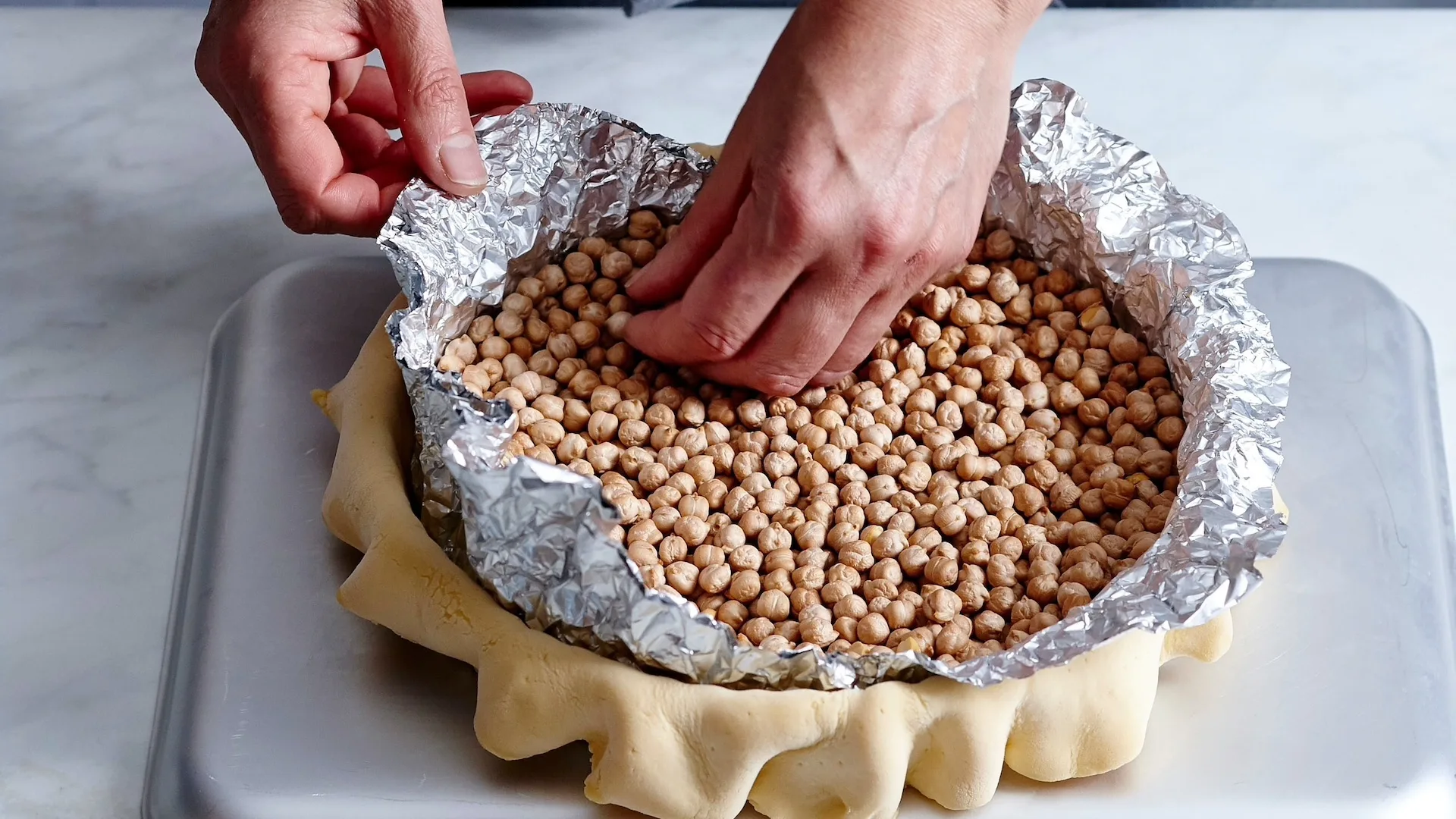
Dried chickpeas make the best baking weights.
(Photo: Rob Shaw)Tip 6: Patch over any cracks in the pastry case
When the tart case is cooked, remove it from the oven and use thin pieces of pastry trimmings to patch up any cracks, then brush it lightly with eggwhite to seal it further. Return it to the oven briefly, then allow it to cool completely to set the pastry. This helps to prevent it absorbing moisture from the filling.
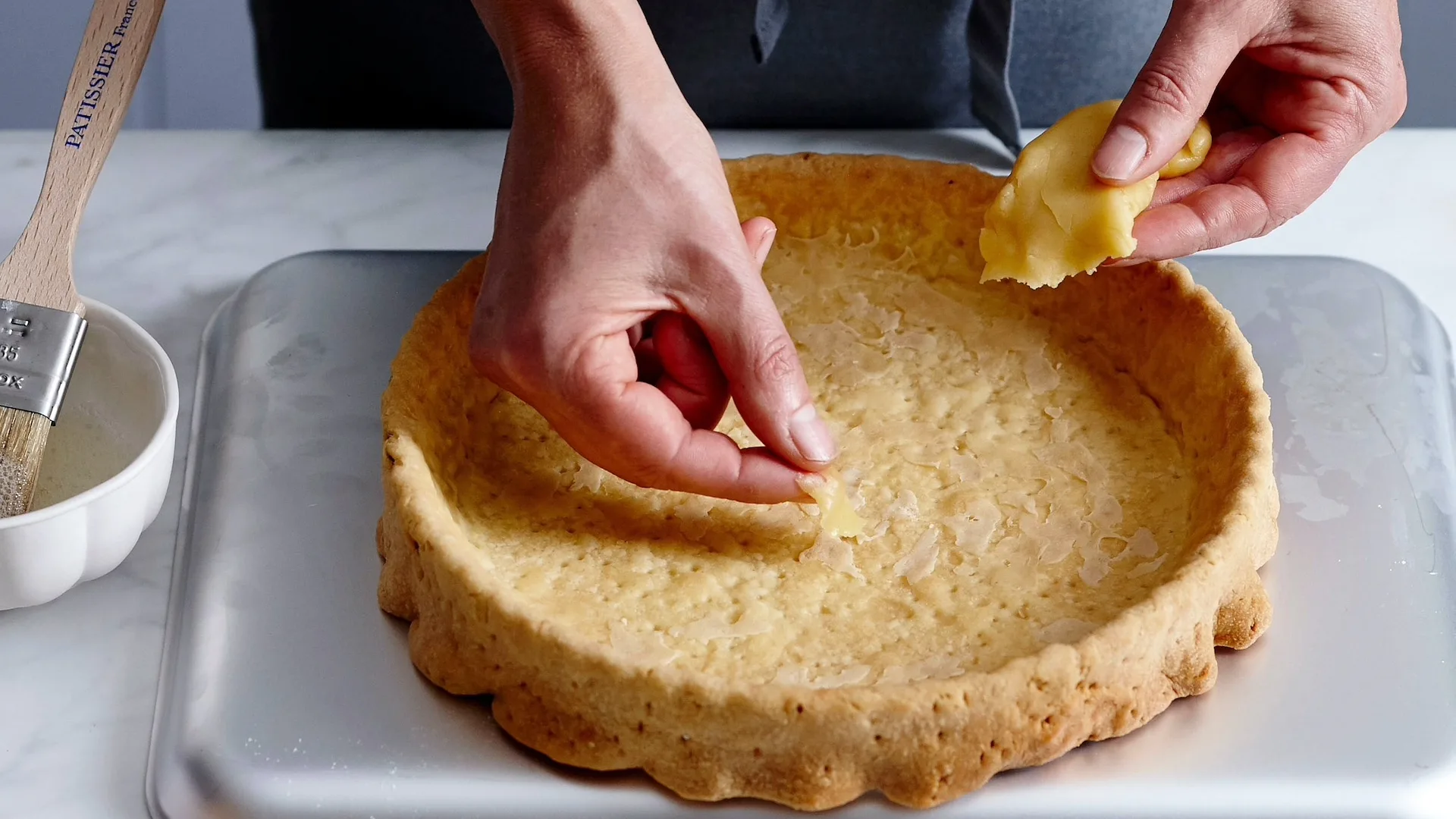
Patch over any cracks in the pastry case. (Photo: Rob Shaw)
Tip 7: Half-fill the tart with custard
Half-fill the tart with the custard, then transfer it to the centre rack of the oven before you fill it right to the top – this prevents spills and makes it easier to slide the tart into the oven. Bake it at a low temperature, checking and rotating it halfway through cooking to ensure it cooks evenly, until it’s set but still has a bit of a wobble in the centre. The best way to check this is to nudge the pan gently.

Half-fill the tart with custard.
(Photo: Rob Shaw)Tip 8: Trim the tart while it’s still warm
Set the cooked tart aside for just five minutes to cool slightly, then trim the pastry edges with a knife. You need to do this while the tart is still warm, before the pastry firms, to prevent it from cracking. Cool the tart in the tin for 2 hours to make it more stable, then remove it (leaving it in the tin much longer will make the pastry soggy).
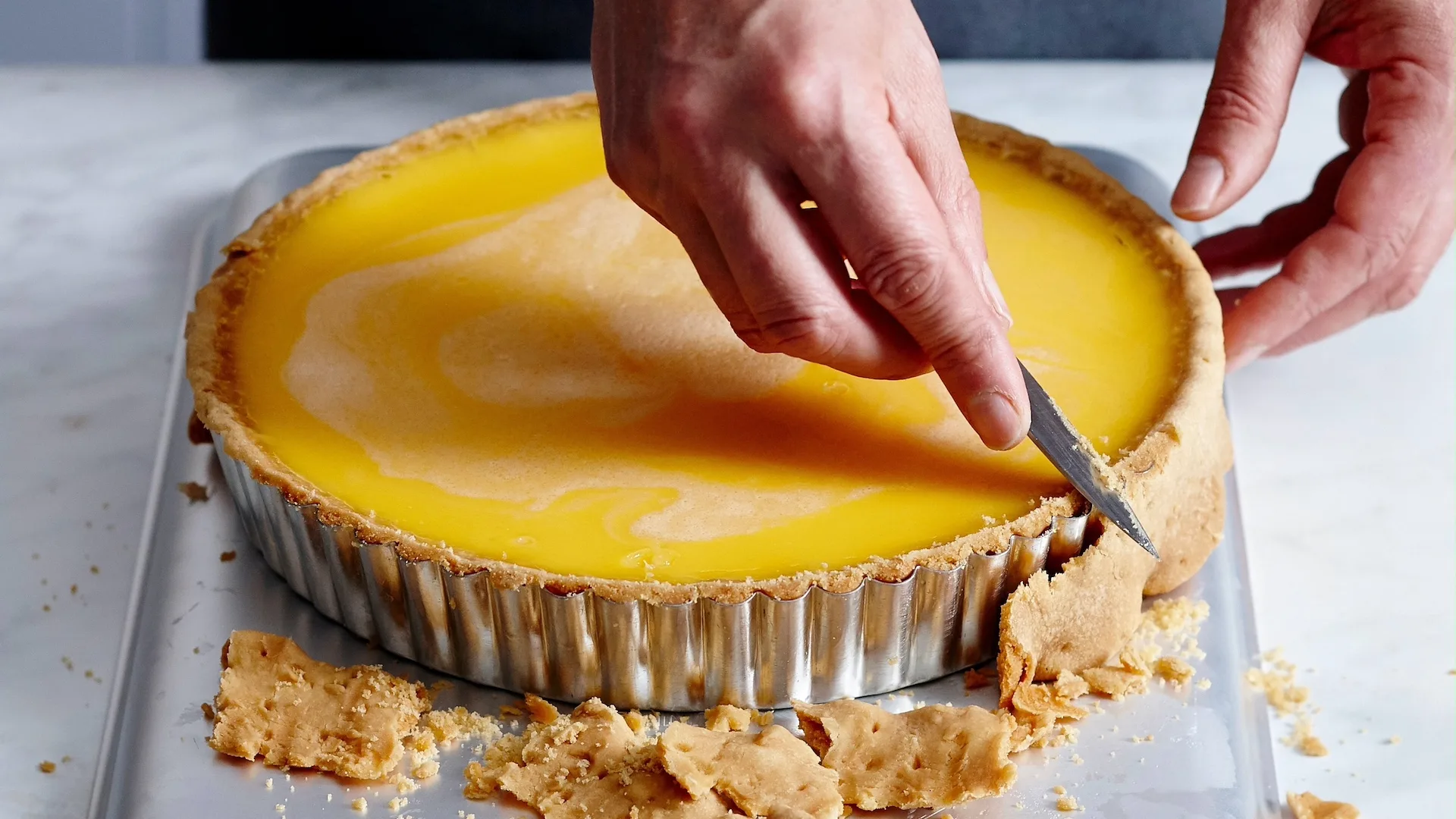
Trim the tart while it’s still warm.
(Photo: Rob Shaw)Tip 9: Let the lemon tart cool in the tin, and it eat it on the day it’s made
Let the tart cool in the tin before removing it, or it will crack. Lemon tart is best eaten on the day it’s made and shouldn’t be refrigerated, so bake it early in the day and allow time for it to rest before serving.
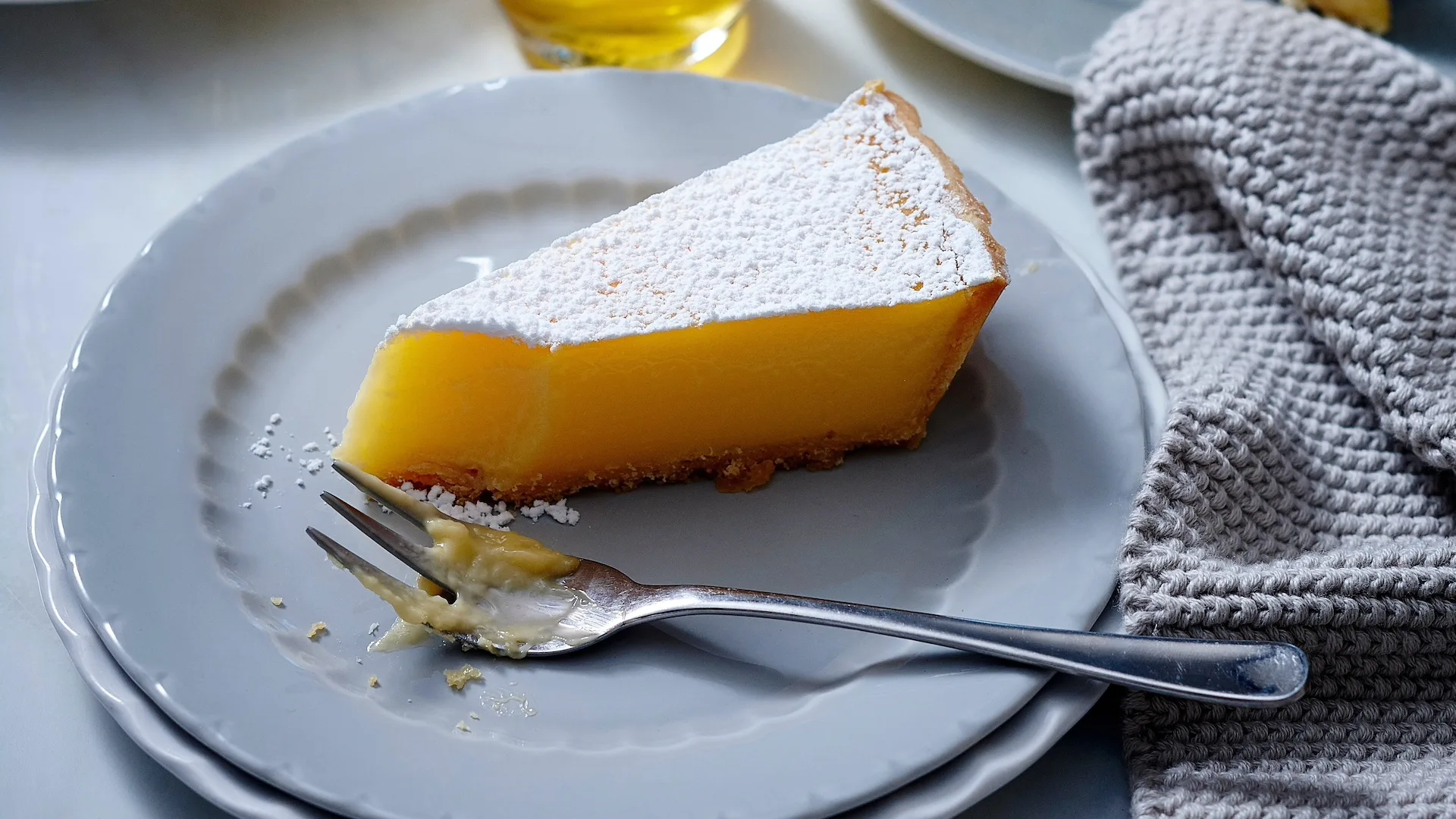
Lemon tart.
(Photo: Rob Shaw)









